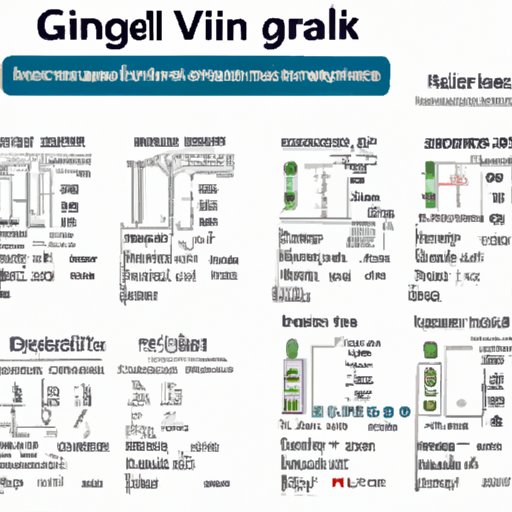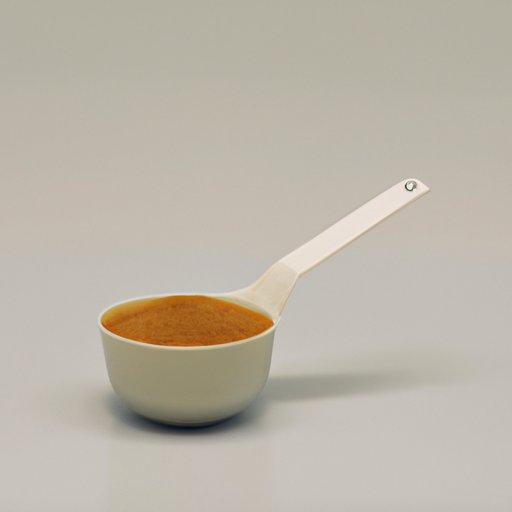I. Introduction
Converting grams to milliliters and vice versa can be a confusing problem for many people. Whether you’re cooking, baking or simply trying to follow a recipe, knowing how to accurately convert between these two units of measurement is key to ensure your dish turns out the way you intended it to. In this article, we’ll provide a beginner-friendly guide to help you understand how to convert grams to milliliters and vice versa.
II. Milliliters and Grams: An Overview
Before diving into the conversion process, it’s important to understand what milliliters and grams are. Milliliters are a unit of measurement for volume, frequently used to measure liquids. On the other hand, grams are a unit of measurement for mass, commonly used to weigh dry ingredients or solids such as fruits and vegetables. Both of these units are essential when it comes to cooking and baking.
III. Milliliters to Grams: The Simple Formula You Need to Know
The formula for converting milliliters to grams depends on the density of the substance or ingredient you’re measuring. Generally speaking, water has a density of 1 g/mL, which means that one milliliter of water weighs one gram. For other ingredients, you can use this formula: mass = density x volume.
For example, if you need to convert 50 mL of milk to grams, you would multiply the density of milk (1.03 g/mL) by the volume (50 mL), which would give you a result of 51.5 grams.
IV. Kitchen Measurements: How to Convert Milliliters to Grams for Precise Cooking
Precise measurements are important in cooking and baking, as they can affect the outcome of your dish. To accurately convert milliliters to grams, you’ll need to follow a few steps. First, you’ll need to determine the density of the ingredient you’re measuring. Next, you’ll need to determine the volume of the ingredient in milliliters. Finally, you’ll multiply the density of the ingredient by the volume to get the weight of the ingredient in grams.
When measuring liquid ingredients like water or milk, it’s important to use a liquid measuring cup to ensure accurate measurements. On the other hand, when measuring dry ingredients like flour or sugar, you’ll need to use a digital scale to ensure precision.
V. The Science Behind Grams and Milliliters: Why Accurate Measurement Matters
Accurate measurement is crucial not only in cooking and baking, but also in science and everyday life. The principle of mass density plays an important role in the conversion of grams to milliliters, as it determines the weight of a substance in relation to its volume. Understanding this principle can help you better understand the conversion process and ensure greater accuracy in your measurements.

VI. Quick and Easy Cheat Sheet for Converting Grams to Milliliters
If you’re looking for a quick and easy reference guide for converting grams to milliliters, we’ve got you covered. Here’s a cheat sheet for some of the most common ingredients:
- 1 gram = 1 milliliter (for water)
- 1 gram = 1 milliliter (for milk)
- 1 gram = 0.57 milliliters (for olive oil)
- 1 gram = 0.85 milliliters (for honey)
- 1 gram = 0.61 milliliters (for sugar)
- 1 gram = 1.15 milliliters (for flour)
VII. How to Measure Ingredients Like a Pro: A Guide to Grams vs. Milliliters
Using the correct measuring equipment is crucial when it comes to measuring ingredients accurately. When measuring liquids, ensure that you use a liquid measuring cup rather than a dry measuring cup, as the two are not interchangeable. Similarly, when measuring dry ingredients, it’s best to use a digital scale rather than measuring cups, as it provides greater precision. When measuring small amounts of ingredients, it’s important to use measuring spoons to ensure accuracy.
VIII. Common Mistakes When Converting Grams to Milliliters (and How to Avoid Them)
One of the most common mistakes people make when converting grams to milliliters is not using the correct density for the ingredient they’re measuring. It’s important to ensure that you’re using the correct density for the specific ingredient you’re measuring, as this can affect the accuracy of your measurement. Another common mistake is not using the correct measuring equipment, which can lead to imprecise measurements. To avoid these mistakes, double-check your measurements and use the correct equipment.
IX. Conclusion
To sum up, understanding how to convert grams to milliliters and vice versa is an essential skill for anyone who loves to cook or bake. By following the tips and formulas outlined in this article, you can ensure that you’re measuring your ingredients accurately and producing delicious dishes every time.
